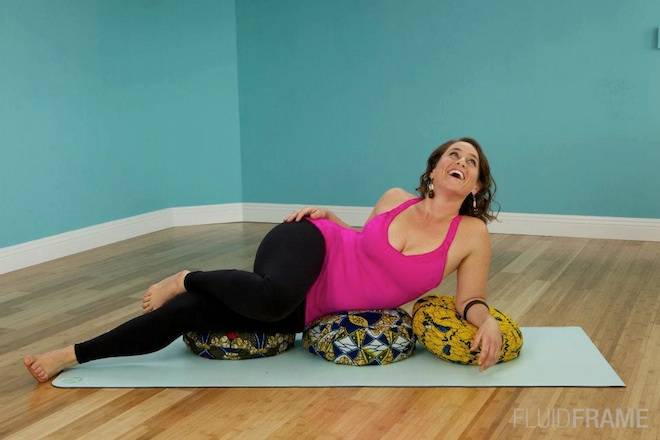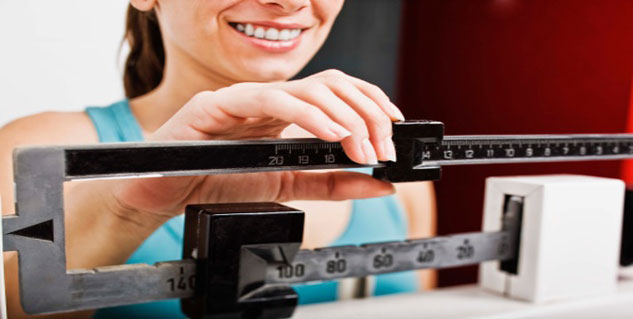Simplified Progression & Periodization To Maximize Results From Your Workouts
Everyone who starts a fitness program has some benefit they’d like to see from all their hard work in the gym. Regardless of the goals, results are the end objective as I know very few people who exercise just for the sake of exercising. Unfortunately, far too many people end up quitting their workout routines after only a few weeks when they don’t see results. While a lack of sufficient effort is sometimes to blame, more often then not the problem is poor planning.
Having a basic understanding of proper progression and periodization is essential to seeing results with your workouts. While this is commonly made over-complicated it doesn’t have to be that way. I’m going to show you how to make it very simple and provide you with some specific guidelines so you never have to worry about getting stuck in a plateau again.
The best place to start this discussion is by reviewing a universal fact of life. “There are few things worth while pursuing that you can expect to accomplish without a clear plan.”
Try building a house without a set of blueprints or traveling across country without the use of a map. That probably won’t end very well. Having a clear plan is essential for success in most anything you can think of in life. You may be well versed on a variety of exercises but if you don’t know how to best use them, your results are likely to be very poor.
Learning an effective system for using exercises to achieve your fitness goals will be the most important and productive activity you’ll ever do when starting out. Mastering the basics will have more impact on your results than trying to do a bunch of random exercises.
The K.I.S.S. Principal of Seeing Results From Your Workouts
I’m sure you’re familiar with the “keep it simple stupid” catch phrase that has been widely used in the book series of the same name. You’re going to want to use this same philosophy when designing your fitness program.
Effective Periodization In The Real World
Let’s start by looking at the real objective of periodization methods and why you want to have a plan for your workout progressions. The reason that progression is so important is because the human neuromuscular system will adapt to any given workload over time. Improvements in any physical skill (strength, endurance, agility, flexibility, etc) do not happen linearly.
For example, you cannot continue to get stronger indefinitely by simply always lifting heavier weights. Sooner or later things will level out with any single stimulus. The key is providing a variety of different stimuli in various cycles to produce physiological change.
A lot of personal trainers and strength coaches like to use load charts and to spend a lot of time tracking sets, reps and other apparently essential information. This is the traditional model of most periodization programs taught in personal training certification courses and textbooks. However, experience has shown me this is not necessary for the average person and it just makes things more complicated. While we could argue the benefits for athletes, standard periodization doesn’t work very well in the real world for the average person.
Any Exercise That Doesn’t Require Much Effort Always Results In Adaptation!
The above statement is really the only concept you’ll ever have to master in order to design effective workout progression strategies. Adaptation to any given workload (which is the natural order of the human body under increased stress) will always result in a plateau. You simply have to keep changing the stimulus and provide yourself with an increased workload if you want to produce the results you’re looking for.
Giving yourself a wide variety of new exercises simply because they’re fun or different without ever changing the intensity will eventually always backfire on you. This is a common mistake I see all the time in health clubs. The basic movements like squats, presses, rows, pull-up’s, etc, have always been the most effective movements, and in my opinion always will be.
Sure, you’ll need to change the stimulus and intensity in order to keep progressing but my experience has been most people simply do too many different movements instead. You could do barbell squats as your only leg exercise, frequently change up the routine, and never have to do anything else for your legs. If you don’t believe me try it for one month and report back to me what you find.
It’s a misconception that you need to do a bunch of different exercises for each body part to see the best results. The basic weight training movements done with progression to higher intensities will always produce the best results.
Stop wasting time in the gym by going from machine to machine doing a bunch of different exercises and learn to master the basics. Trust me your return on investment in the time and sweat you put into your workouts will be ten fold.
Making Sure To Have Clarity With Your Fitness Goals
First, always determine exactly what you want to see from your fitness program. Chances are you may have multiple goals and objectives and that’s ok. The key thing is to just make sure you’re clear with where you want to go and what you want to accomplish.
For example, if your objective is fat loss you’ll need to design your workouts specifically around that objective. Working up towards doing burst training routines will be far more productive in this situation compared to doing traditional body building routines.
Seek the assistance of a knowledgeable fitness professional as he or she can help you create the right type of program to meet your specific wants and needs. Just going through the gym doing the same old “3 sets of 10” on each machine will get you nowhere.
An Effective Program Is Always Built On Solid Movement Patterns
An important concept to understand is that continued progress will always be directly correlated to your movement and function. Therefore, your ability to really change your shape and see dramatic improvements will depend on your ability to move better.
You’ll be limited on how far you can progress if you’re hampered by faulty movement patterns. Because of this fact, it’s always a good idea to have an assessment of movement patterns and muscular imbalances done by a trained fitness professional before starting a workout routine.
Based on their findings you’ll have a much better idea on how long you’ll need to spend on corrective exercises before you progress to higher intensity movements. In short, you’ll have a solid plan for how to proceed along with specific exercises and stretches to help you correct any imbalances.
The Basic Four Phases Of Simple Periodization
Experience has shown me that you can group pretty much all fitness training objectives for the average individual into the following four categories of simple periodization.
1. General Conditioning Phase
2. Hypertrophy (Muscle Development) Phase
3. Burst Training Phase
4. Recovery Phase
You’ll find that you won’t need to stay in each phase for the same period of time or necessarily follow a sequenced order. The idea is that each category reflects a change in stimulus. Your objective will be to provide a sequence of these stages to get the best results.
The majority of people new to exercise will want to start with the General Conditioning phase to stabilize the joints, improve neural recruitment, and build a solid foundation of movement patterns to support higher intensity exercise later.
This is commonly done with bodyweight movements, resistance bands, suspension straps, and other functional training exercises. Light weights can be used but the volume of exercises is kept low along with the intensity.
The Hypertrophy phase typically comes next and this is where weight training exercises are used to promote a development in lean muscle. The volume of exercises increases as does the intensity. Loads are progressively increased in order to promote muscle growth. This phase is essential even if you’re just looking to tone and firm. Trying to stay with light weights and high reps indefinitely will only lead to adaptation like we discussed earlier.
The Burst Training phase is the most productive phase for the average individual looking to lose unwanted body fat. A wide variety of exercises can be used but the key component in burst training is doing short bursts of all out effort followed by brief recovery periods. The intensity is very high in order to promote surges in powerful fat burning hormones like testosterone, IGF-1, growth hormone, and nor-adrenaline.
The recovery phase is exactly like it sounds. This is nothing more than taking a short break in higher intensity training to allow the joints to recovery. Bodyweight and functional exercise routines with resistance bands or suspension straps are my preferred method of training during recovery phases. You can also take a break for a recovery phase by doing other low-impact exercises like swimming, cycling, or recreational sports.
If you’d like to learn more about the specifics of each phase along with exercise routines to follow download a free copy of my e-book entitled “The Essentials Of Burst Training Workout Design” from my website.
Shane Doll CPT, CSCS is a certified Charleston personal trainer, fat loss expert, speaker and founder of Shaping Concepts Personal Training Studios. As a specialist in burst training for body transformation and weight loss he provides nutrition and fitness coaching along with e-books, videos, and other resources on his website: www.shapingconcepts.com. Visit the website where you can download his free e-book, “The Essentials Of Burst Training Workout Design.”
-
How To Choose Backpacks For Camping
When you are going camping, there is one tiny but important factor tha
-
Ancient Secret For Weight Loss
?THE SECRET REMEDY OF THE ANCIENT WARRIORS?Since what would seem to be
-
Three Tips For Successful Weight Loss
Weight loss isnt just about eating less food. Healthy eating can accel
-
Top 10 Signs You Need to Lose Weight
-
The College Students Guide For EASY WEIGHT LOSS
Weight loss is a hot topic among college students today, especially co
-
Best weight loss exercise for great results
There is no better way to burn off calories but to sweat it out
- DON'T MISS
- Losing Weight Through Tried And True Advice
- Tips to a more effective healthy weight loss program
- Do I Need To Exercise To Lose Weight?
- The Best Way To Lose Weight Forever
- Wonderful Tips To Burn Those Tenacious Undesirable Pounds Away
- How About That Atkins Diet
- Quick And Healthy Weight Loss - Healthy Weight Loss Guide To Reading Food Labels
- 5 Natural Tips To Help You Recover From The Flu
- How to Lose Weight the Healthy Way without Dieting
- Weight Loss Fast Tips - Are You Following A Diet Quickly Enough?




